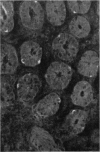Abstract
Immunofluorescence (anti-secretin), cytochemical, and ultrastructural studies were carried out on jejunal biopsies from 16 children with coeliac disease and from 17 controls with suspected malabsorption but normal jejunal morphology.
In 11 of the 16 coeliacs there was generalized hyperplasia of endocrine cells and, specifically, of the secretin (S) cells.
Further studies, on adult coeliacs as well as on children, combined with serum secretin assays, may establish whether the S cells are abnormally storing hormone because of inability to release it or because of excess production.
Full text
PDF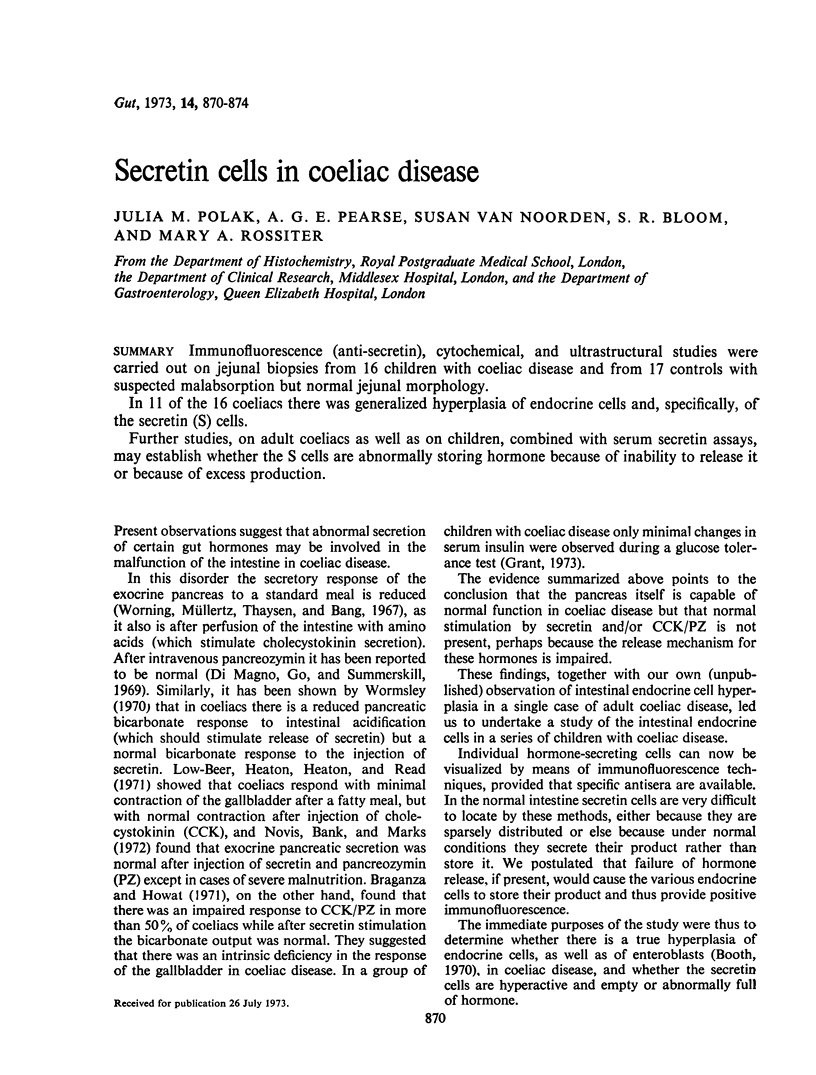
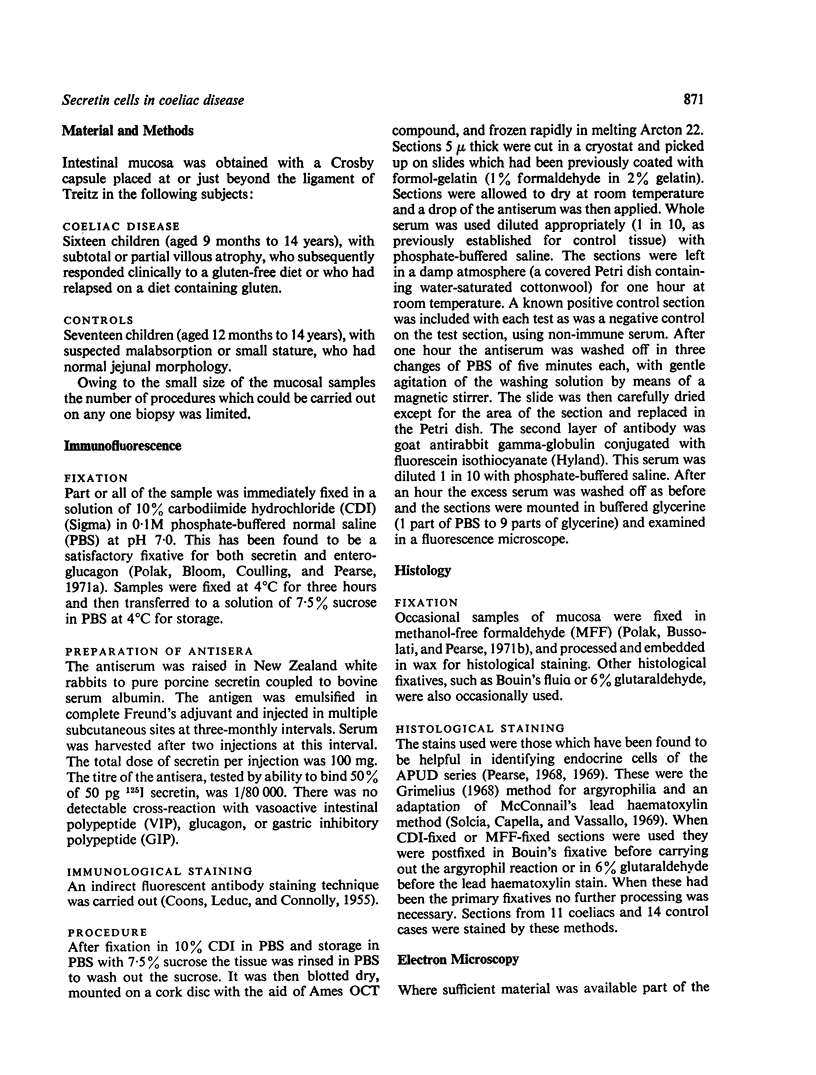
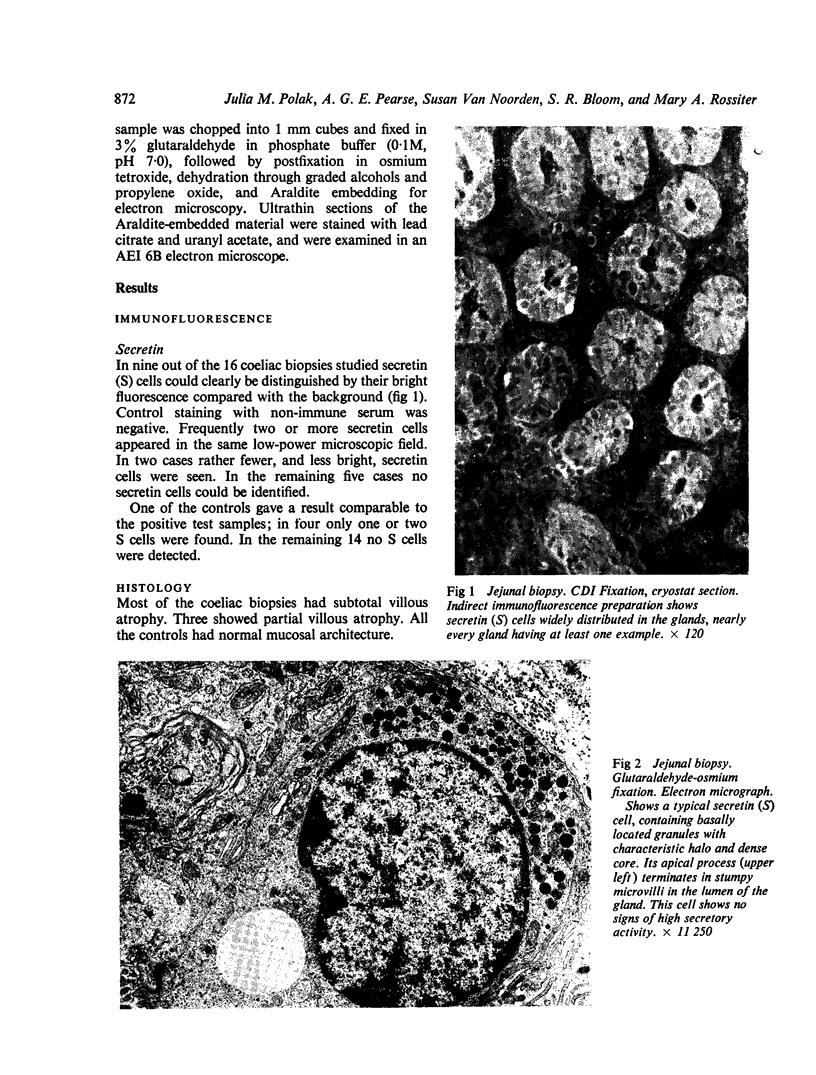
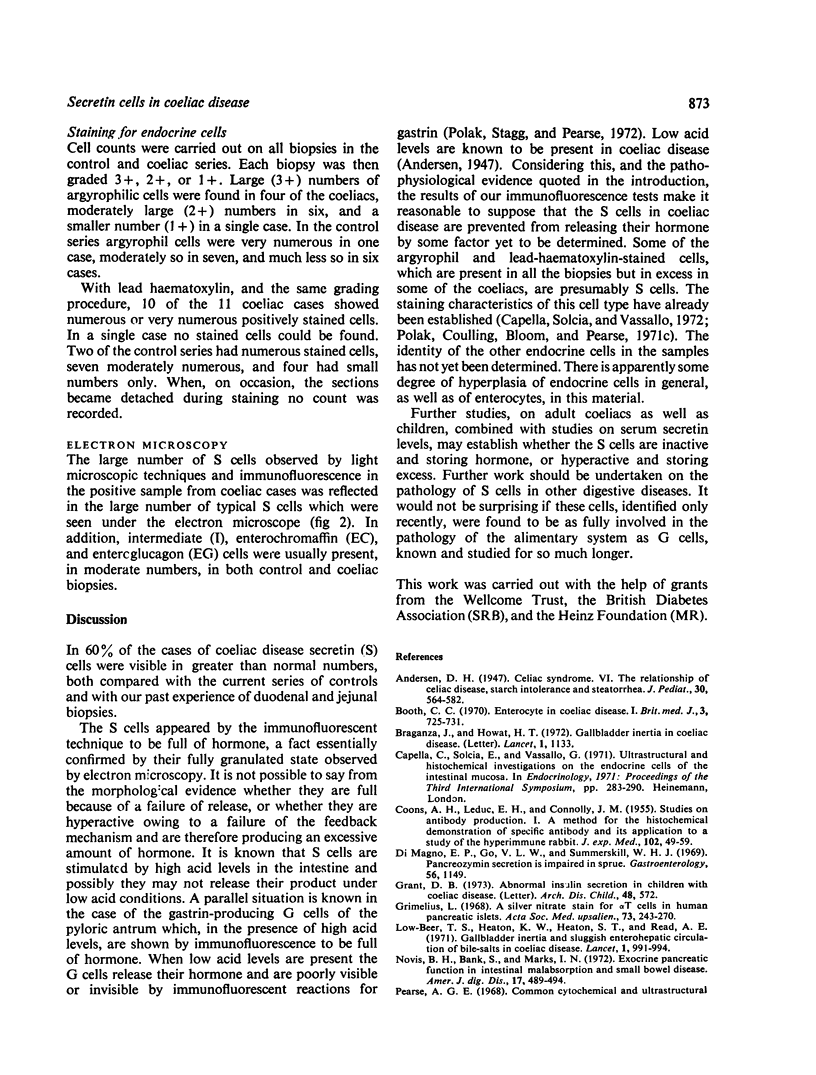
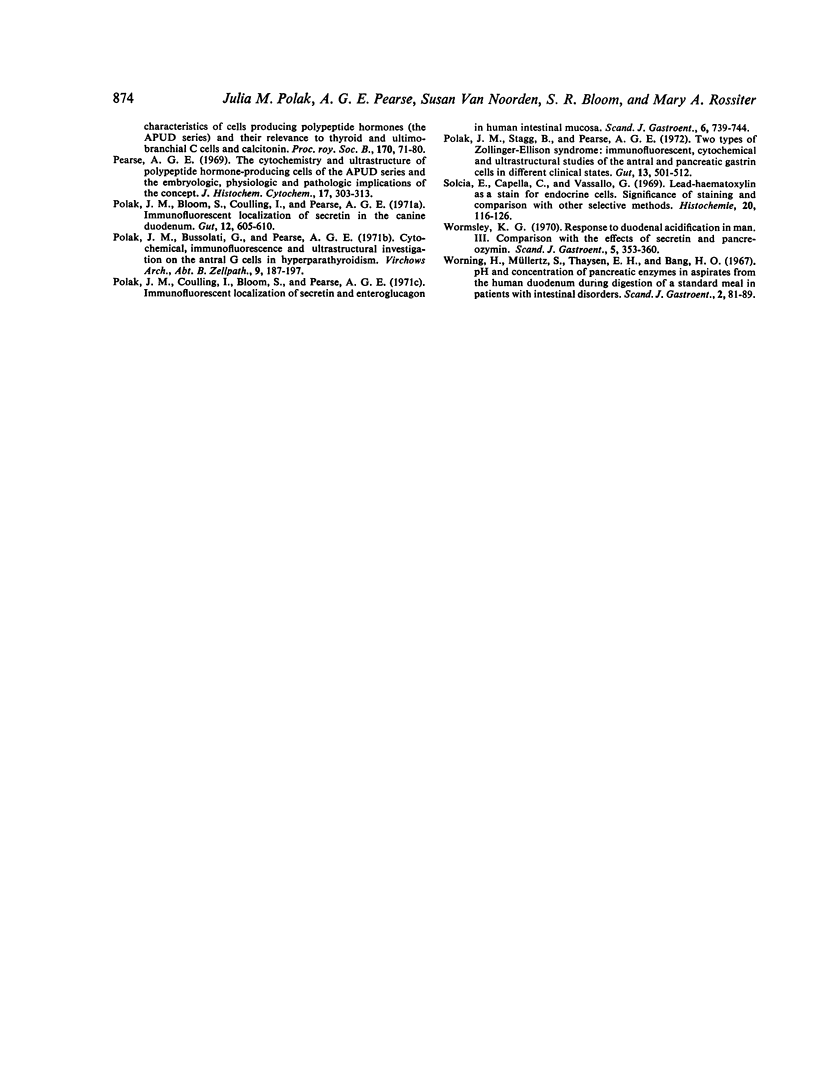
Images in this article
Selected References
These references are in PubMed. This may not be the complete list of references from this article.
- Booth C. C. Enterocyte in coeliac disease. 1. Br Med J. 1970 Sep 26;3(5725):725–731. doi: 10.1136/bmj.3.5725.725. [DOI] [PMC free article] [PubMed] [Google Scholar]
- Braganza J., Howat H. T. Rapid evaluation of creatinine clearance. Lancet. 1971 May 29;1(7709):1133–1133. doi: 10.1016/s0140-6736(71)91872-1. [DOI] [PubMed] [Google Scholar]
- COONS A. H., LEDUC E. H., CONNOLLY J. M. Studies on antibody production. I. A method for the histochemical demonstration of specific antibody and its application to a study of the hyperimmune rabbit. J Exp Med. 1955 Jul 1;102(1):49–60. doi: 10.1084/jem.102.1.49. [DOI] [PMC free article] [PubMed] [Google Scholar]
- Grant D. B. Abnormal insulin secretion in children with coeliac disease. Arch Dis Child. 1973 Jul;48(7):572–572. doi: 10.1136/adc.48.7.572. [DOI] [PMC free article] [PubMed] [Google Scholar]
- Grimelius L. A silver nitrate stain for alpha-2 cells in human pancreatic islets. Acta Soc Med Ups. 1968;73(5-6):243–270. [PubMed] [Google Scholar]
- Low-Beer T. S., Heaton K. W., Heaton S. T., Read A. E. Gallbladder inertia and sluggish enterohepatic circulation of bile-salts in coeliac disease. Lancet. 1971 May 15;1(7707):991–994. doi: 10.1016/s0140-6736(71)91387-0. [DOI] [PubMed] [Google Scholar]
- Novis B. H., Bank S., Marks I. N. Exocrine pancreatic function in intestinal malabsorption and small bowel disease. Am J Dig Dis. 1972 Jun;17(6):489–494. doi: 10.1007/BF02231203. [DOI] [PubMed] [Google Scholar]
- Pearse A. G. Common cytochemical and ultrastructural characteristics of cells producing polypeptide hormones (the APUD series) and their relevance to thyroid and ultimobranchial C cells and calcitonin. Proc R Soc Lond B Biol Sci. 1968 May 14;170(1018):71–80. doi: 10.1098/rspb.1968.0025. [DOI] [PubMed] [Google Scholar]
- Pearse A. G. The cytochemistry and ultrastructure of polypeptide hormone-producing cells of the APUD series and the embryologic, physiologic and pathologic implications of the concept. J Histochem Cytochem. 1969 May;17(5):303–313. doi: 10.1177/17.5.303. [DOI] [PubMed] [Google Scholar]
- Polak J. M., Bloom S., Coulling I., Pearse A. G. Immunofluorescent localization of secretin in the canine duodenum. Gut. 1971 Aug;12(8):605–610. doi: 10.1136/gut.12.8.605. [DOI] [PMC free article] [PubMed] [Google Scholar]
- Polak J. M., Bussolati G., Pearse A. G. Cytochemical, immunofluorescence and ultrastructural investigations on the antral G cells in hyperparathyroidism. Virchows Arch B Cell Pathol. 1971;9(3):187–197. doi: 10.1007/BF02894045. [DOI] [PubMed] [Google Scholar]
- Polak J. M., Coulling I., Bloom S., Pearse A. G. Immunofluorescent localization of secretin and enteroglucagon in human intestinal mucosa. Scand J Gastroenterol. 1971;6(8):739–744. doi: 10.3109/00365527109179946. [DOI] [PubMed] [Google Scholar]
- Polak J. M., Stagg B., Pearse A. G. Two types of Zollinger-Ellison syndrome: immunofluorescent, cytochemical and ultrastructural studies of the antral and pancreatic gastrin cells in different clinical states. Gut. 1972 Jul;13(7):501–512. doi: 10.1136/gut.13.7.501. [DOI] [PMC free article] [PubMed] [Google Scholar]
- Solcia E., Capella C., Vassallo G. Lead-haematoxylin as a stain for endocrine cells. Significance of staining and comparison with other selective methods. Histochemie. 1969;20(2):116–126. doi: 10.1007/BF00268705. [DOI] [PubMed] [Google Scholar]
- Wormsley K. G. Response to duodenal acidification in man. 3. Comparison with the effects of secretin and pancreozymin. Scand J Gastroenterol. 1970;5(5):353–360. [PubMed] [Google Scholar]



